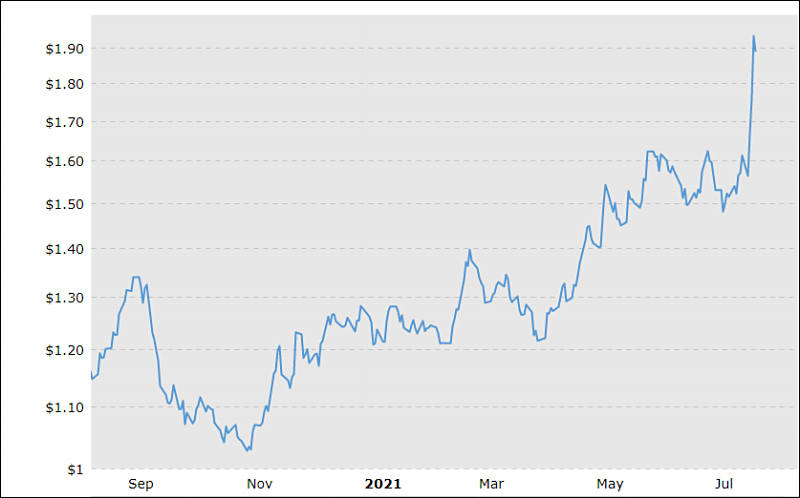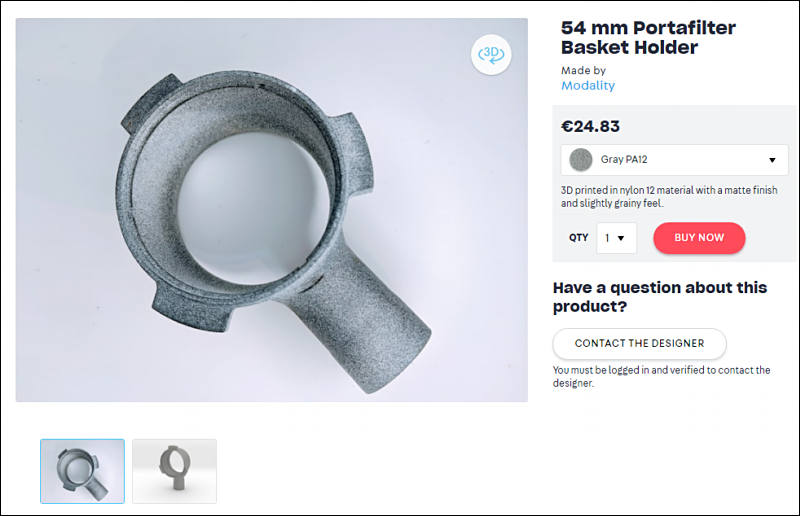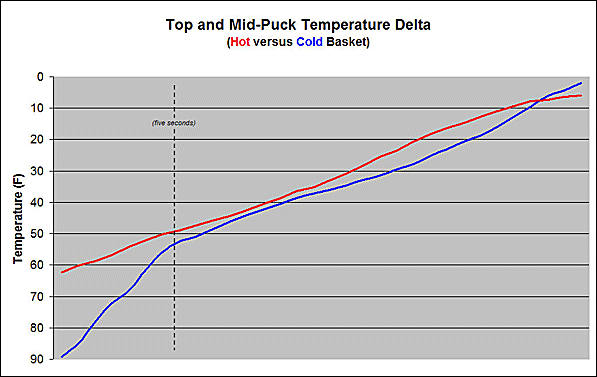
It allows to keep PV going, with more focus towards AI, but keeping be one of the few truly independent places.
-
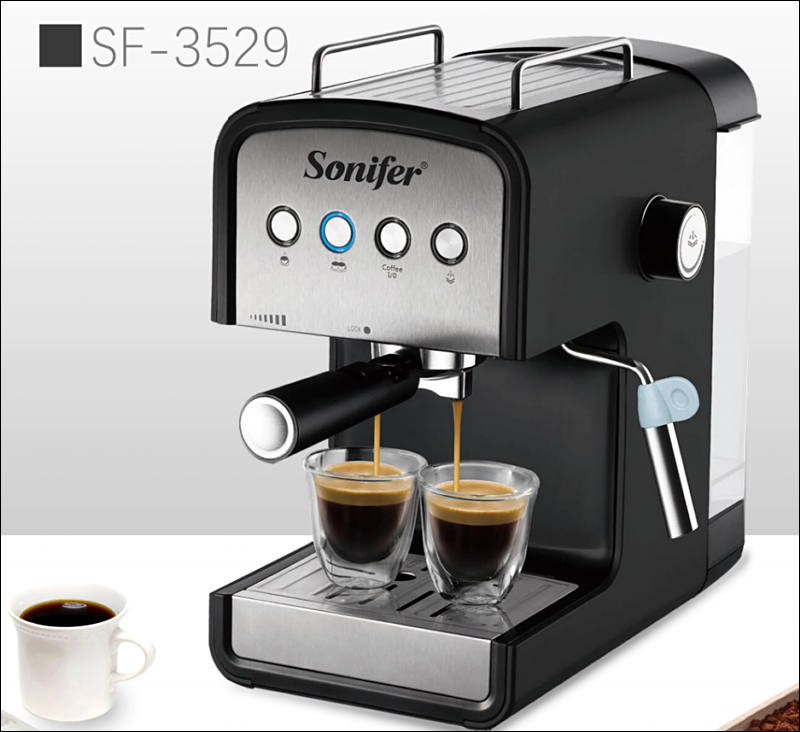
At first I'll be touching only simple handle home machines (for small family) and some general things for now.
All espresso and coffee machines stuff in general are very similar to audiophiles forums and you need mental strength to read all this nonsense.
Same way prices go exponential as you want to approach perfection, and from quite low point the real taste won't be changing really much (same as sound won't be changing almost at all from quite cheap but good to top hi-end amplifier).

 sa17050.jpg800 x 732 - 63K
sa17050.jpg800 x 732 - 63K -
Arabica coffee futures are about to register their largest annual gain in a quarter-century due to a global deficit.
Arabica coffee futures jumped 78% to about $2.30 per pound in New York this year, putting it on track for the best year since 1994.
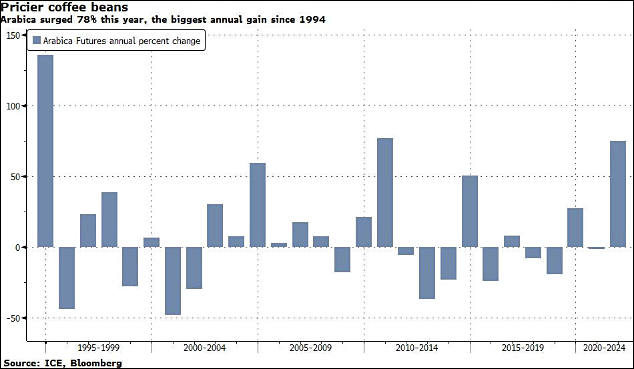

 sa19146.jpg634 x 369 - 34K
sa19146.jpg634 x 369 - 34K -
Interesting design
-
Asher Yaron on The Truth About The Perfect Cup of Coffee
-
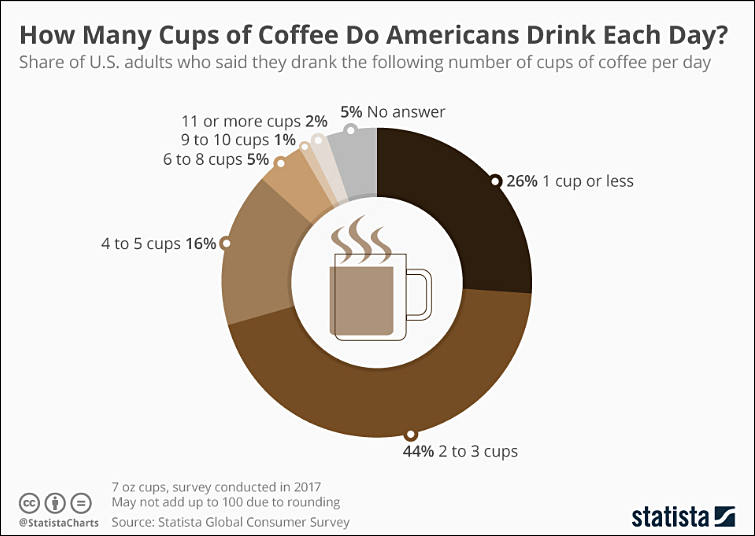
The most popular type of coffee in the U.S. is good old drip coffee, with 63 percent saying they consumed it. 22 percent of Americans said they drank iced coffee, followed by instant coffee (18 percent) in third place.
One huge advantage of espresso is that you get it fast with very rich flavor and much less caffeine.

 sa17510.jpg755 x 536 - 47K
sa17510.jpg755 x 536 - 47K -
The US is the largest coffee market in the world with over $80 billion in revenue, and almost 60% of the coffee sold in the country is brewed with premium beans.
We analyzed 481 US coffee roasters and looked at what services they offer to their customers. Let's take a look at the results.
The average price for a 12oz (340 grams) bag of freshly roasted coffee is $16.90 (around $50 per kg). The least expensive price is $7, and the most expensive bag will cost you $59.
For reference - good green arabica cost (in US) is $6 per kg (this is not big wholesale). $12 is really top kinds. Robusta is $3 per kg. Farmers get from around 20% for small to 70% for large owners from this.
For example, espresso blend will be sold to you for around $40-$50 per kg, but source cost is $5-5.4. If you add water evaporated during roast it will be $6.4 tops. So, it is 5-7.8x times price rise for pretty basic procedure.
-
Long two part video with big green coffee resellers discussing why they are absolutely required despite being total parasites
Very interesting to see few open enemies of the people talking and smiling.
For example, they fixed dollar price around red circle time (late 2016) and in video they explain it as they did it because they wanted "stability", but just open price chart
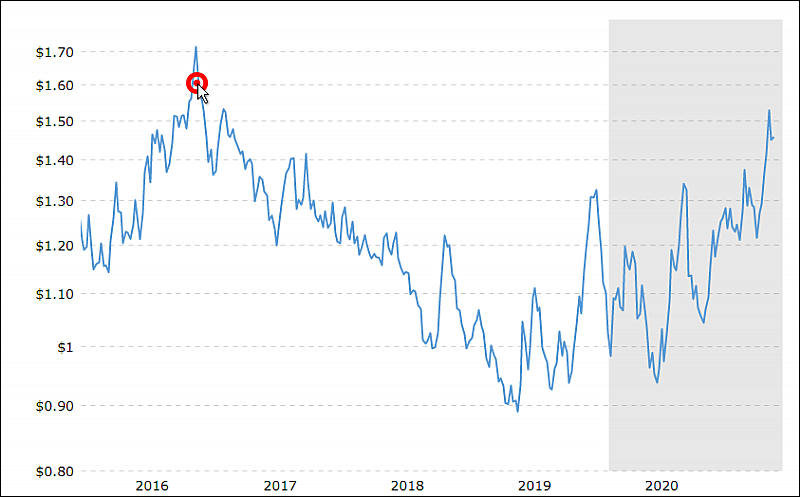
And you see that this guys just stole billions on only this one thing due to price trend.

 sa17284.jpg800 x 497 - 49K
sa17284.jpg800 x 497 - 49K -
Old and new espresso
Classic definition
Hot water, passing at a pressure of 9 atmospheres through a correctly ground dose of coffee (7 grams), produces a portion of espresso (25-30 milliliters) during the extraction time (25-30 seconds).
This is also formula used by Nespresso machines - 5.5-7.2 grams of coffee per capsule.
Modern roasters and influences will try to convince you to use maximum capacity of 58mm basket - around 18-20 gramms. All of them stand for 1:1,9 to 1:2.1 ratio. So, for 19 grams you get around 38 grams of coffee.
Notice how much more profits it is for them... :-)
-
Another capitalism illustration
One of the largest and most known of B2C roasters in Mordor has all the qualities of typical capitalist business.
Main founder is son of the owner of largest green coffee importer, who is also one of the largest roasters dealers and have their own experts in coffee and their own working roasters. So, guy had absolutely no risk, zero. And still has special prices for green coffee and roasters that no one can match.
Yet, as it is advanced shark - prices are among highest in the niche. Guys even use bad trick with non standard coffee doses they sell getting big premium to price (they use 150/400/800g, instead of standard 250/500/1000g that competition use). Prices are such not because only quality, it is pretty standard. But because very big marketing expenses and very big personal appetites. Guys love expensive cars, exotic travels, super expensive equipment including paying huge money to transport and restore some outdated stuff.
-
Note that since COVID start prices for good coffee jumped significantly due to consumption jump, industry is very inert and can't react with more supply.
Yet, income of most people did not.
-
Thing about roasters is totally true. Here we had that small roaster next home in a city I lived previously, good coffee, not expensive, very sweet, oily and thick. I used to buy from them a day or two after new batch direct from the factory. They bested even expensive coffee. Now it looks like they choose to keep the price but bring the costs down. Maybe they fired some people, but surelly they are not buying the good grains anymore, their coffee is now dry roast with flat taste, very little oil at all. Still not bad coffee but nothing near the old days.
-
On coffee marketing and roasters
Freshness Coffee freshness is very clearly important, especially for smell, But importance is exaggerated as small coffee producers compete mostly on this point and they invest most money in marketing focused on this, they can't buy coffee in large amounts and normally get much worse terms.
Roast date If you think that roaster will be honest and will print real roast date - think again. As errors in market demand is very frequent, hence, for medium and small roasters sometimes up to 20-30% of coffee, especially it concerns more expensive and rare lots, can be out of their advertised optimal time frame. In such case they normally just put fake roast date.
Quality All roasters are capitalist businesses, they are not aimed at offering you best thing, they are optimizing profits and income for their owners first. Such way they frequently chase cheaper and more problematic lots, buy coffee with issues. Love to add cheaper coffee to more expensive one, less responsible firms just replace more expensive region coffee with less expensive one as they actually got it much cheaper.
Roasting stability and quality For many small roasters stability is from average to bad, this also originates in wast difference of coffee batches they usually get. You can get completely different coffee next time. Including here staggering errors. Small business can't throw their errors away, so many of them have computer system allowing them to get rid of this and get profit at the same time, so they try to offload such coffee on less important clients who order many different items.
Very large roaster you can find in shops can make more stable coffee as they use much larger machines and mix big amount of similar lots, this is why sometimes variation inside one pack is larger, but resulting coffee is more stable in taste and quality.
-
Coffee quality jumps, real vs advertised
Suppose you want to make pair of cappuccinos each morning.
What will be real quality changes during typical progress steps and that are advertised by infuencers?
Step 0. Now you just use non frothed milk and instant coffee.
Step 1. Cheap Chinese espresso machine, use of ground coffee from shop (not cheap, vacuum seal, less than 6 months since roasting, not hard to find), pressurised basket.
Real jump - very big jump in quality, you are getting almost real cappuccino, but coffee is holding you.
Also need to learn proper frothing techniques.Advertised jump - different, but all of them hate this step. As here none of infuencers are getting anything from you.
Step 2. Cheap Chinese espresso machine, use of cheap flat or conical burrs grinder, mass market coffee from shop (not cheap, up to 2 months since roasting, harder to find), pressurised basket.
Real jump - big, but not very big. Having fresh ground coffee smell adds to perceived flavor a lot.
Advertised jump - usually small, again all of them hate this step. As here none of infuencers are getting anything from you still.
Step 3. Cheap Chinese espresso machine, use of cheap flat or conical burrs grinder, cheap custom freshly roasted coffee or mass market coffee from shop (not cheap, up to 2 months since roasting, harder to find), non-pressurised basket.
Real jump - from small to not very big. Having fresher coffee adds to perceived flavor a lot. But note that jump in price is no equal to jump in real taste. Most of small roasters are high margin firms that also get green coffee for much higher prices. Many of them make staggering errors that is rare on mass market, and they can't throw away bad coffee. Lot of coffee waste for beginners due to tuning.
Advertised jump - huge, now they start to love you. As 80-90% of their income comes from roasters, it can be either their own firm or their partners.
Step 4. Medium level Chinese/Italy espresso machine, use of cheap or medium flat or conical burrs grinder, cheap to medium price freshly roasted coffee, non-pressurised basket.
Real jump - from none to small. Here comes rule of diminishing returns. But it brings much more consistency. Small jump provide very handy machines ala Sage/Breville Bambino Plus or similar. Retro machine can bring negative slide.
Advertised jump - huge, again, here is their main audience that brings income (but this audience is only around 10-15% of their total viewers and readers). Another 20% of their income come from premium machines manufacturers and accessories sellers.
Step 5. Top level Italy/Breville or similar espresso machine, use of medium to top flat or conical burrs grinder, medium to top price freshly roasted coffee, non-pressurised basket.
Real jump - from small to negative. Here rule of diminishing returns shines at full. Consistency and real quality here can go down, if you will try retro machines or lever machines. E61 machines that are heavy promoted are very bad for home tasks, so your cappuccino can actually be worse than on previous steps if you not follow proper rules that are not very handy (like waiting 30 minute for heat to propagate and making flushing)
Advertised jump - from very big to huge. Not a lot of sales for presstitutes here, but each sale brings good money to them. As I told - 20% of their income come from premium machines manufacturers and accessories sellers.
-
It is important to understand that in order to feel the "currant notes", "fruity bouquet" or some "spicy aftertaste" - you need to develop your taste for a long time and thoroughly through a large number of trials and repetitions. And this is unattainable for ordinary coffee lovers - they do not taste coffee in hundreds of cups, because for them it is not a job or a profession, but just love or a habit.
To be short - modern coffee industry is very similar to wine one.
Lies, more lies and lot of important sounding words.
Capitalism makes people do all such nasty things - as specialty coffee is just little better, but can be many times more expensive. So they invent lot of dreamy stuff to get your money for almost nothing. -
Horrible grinder engineering - Baratza Sette 270W
-
E61 group construction
-
On E61 group thermal stability
-
On wrong boiler design
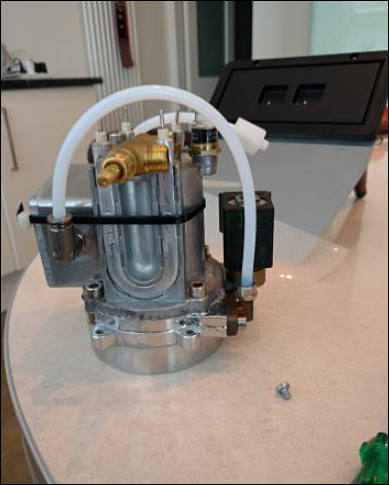
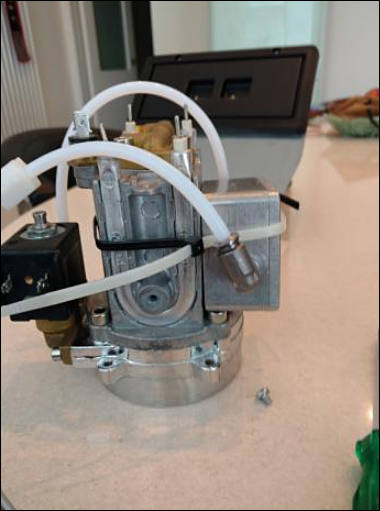
Thing that you see here is preheater box.
https://coffeeforums.co.uk/topic/30868-gaggia-classic-preheater-box/
Why people are doing it? Because most boilers for small home machines are designed strangely, as cool water inlet is located low near the place where water go into brewing. Hence the fast temperature drops.
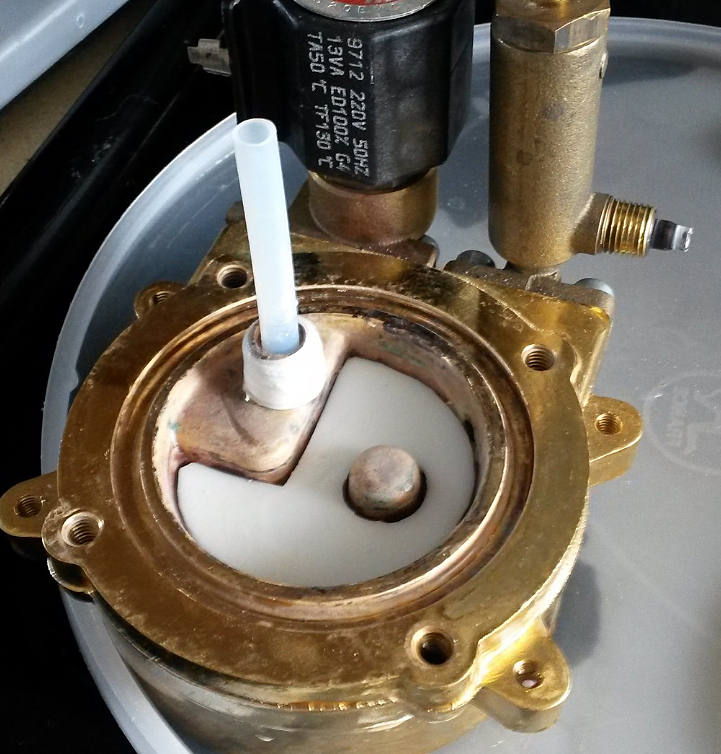
Gaggia use quite ill attempt with tube going up - issue with such design is that after steaming you can have situation where top of the boiler is empty. Hence the flushing needed.
In good design you need vertical divider in boiler that ends just before boiler top with two water inlets going to both parts, in the brewing setting you will have cool water going to one half and hot water going from the other half. In steam mode you need to turn on second inlet via solenoid, as otherwise half of boiler can have no water with time.
Another solution is to have preheat boiler or use thermocoil.

 sa17211.jpg389 x 485 - 28K
sa17211.jpg389 x 485 - 28K
 sa17212.jpg380 x 511 - 29K
sa17212.jpg380 x 511 - 29K
 sa17213.jpg721 x 754 - 82K
sa17213.jpg721 x 754 - 82K -
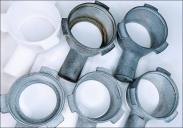
 sa17172.jpg800 x 560 - 77K
sa17172.jpg800 x 560 - 77K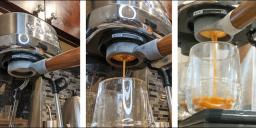
 sa17173.jpg800 x 383 - 68K
sa17173.jpg800 x 383 - 68K
 sa17174.jpg800 x 516 - 49K
sa17174.jpg800 x 516 - 49K
 sa17176.jpg597 x 377 - 38K
sa17176.jpg597 x 377 - 38K -
Three way solenoid valves and problems they can cause
Such valve seems like very good idea:
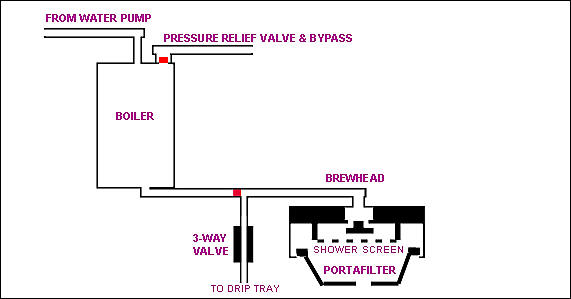
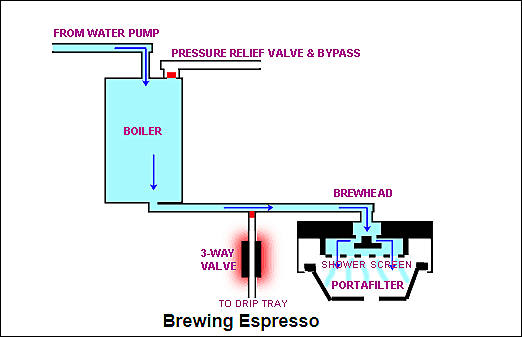
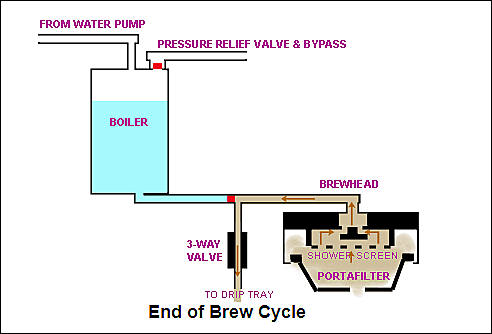
http://espressomyespresso.com/3way/1.html
It's a valve that releases the brew pressure from the grouphead, allowing you to immediately remove the portafilter after an extraction.
Superb isn't it?
It is just one issue - it is not so important on home machine with single boiler, as you can just turn the steam dial and drain the pressure, if you are in hurry.
If you do milk right after brewing and keep portafilter in place you have some dripping happening on machines without OPV. And it is not bad thing, as such cheap machines have very simple mechanical valve inside head (that prevents water leaks before you start brewing) and it plays the role of pressure valve during steaming, so some excess steam and little water go through the puck. With OPV machine you can have pressure buildup.
Most of the more basic models of Espresso Machines tend use the aptly named "Group Valve," a spring-loaded rubber check valve which plugs the group head, which is forced open when the pump is switched on.
Yet - it makes stuff more complex and expensive
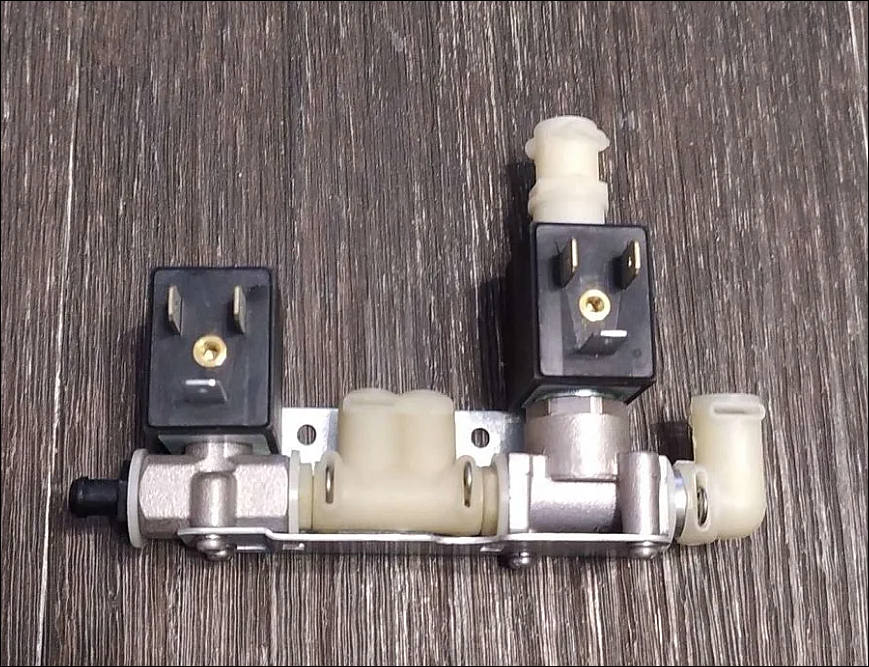
Above is the three way valve used in one of medium range popular espresso machines.
And its price is around 40-70% of whole used machine in good state. Because it has slightly changed solenoids. More standard parts will cost less.
Such valves are not designed to be under constant big heat, large pressures and so on, hence they like to die. Especially in some machines designs that are not good for them.
Also you need to do so called regular backflush to clear this three way valve and tubes.
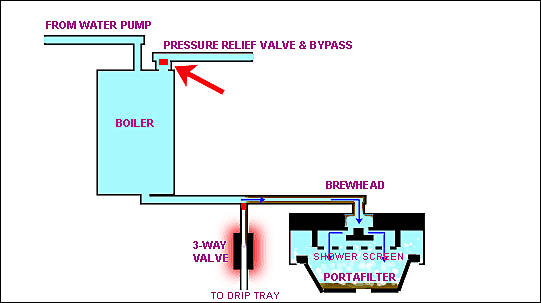

 sa17162.jpg869 x 667 - 132K
sa17162.jpg869 x 667 - 132K
 sa17164.jpg571 x 299 - 22K
sa17164.jpg571 x 299 - 22K
 sa17165.jpg522 x 337 - 26K
sa17165.jpg522 x 337 - 26K
 sa17167.jpg492 x 334 - 26K
sa17167.jpg492 x 334 - 26K
 sa17168.jpg541 x 303 - 25K
sa17168.jpg541 x 303 - 25K -
Pre-infusion dirty secret
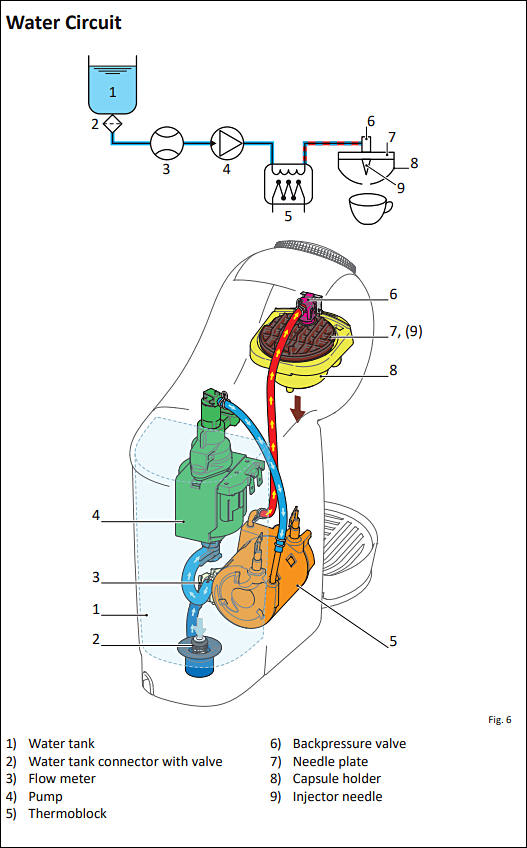
Look again on this scheme above.
Notice the red tube, if machine is just turned on or had good pause - it has cold water in it that you can't heat up before the shot.
This is why marketing gurus who helped with fully automatic coffee machines sales reinvented the importance of "pre-infusion". Machine pushes this cold water in your coffee, after this waits for small time, helping its thermoblock to heat more also.
All thermoblock based machines have this issue, only exclusion is few Breville/Sage models that use advanced thermocoil resting right above portafilter.
Howdy, Stranger!
It looks like you're new here. If you want to get involved, click one of these buttons!
Categories
- Topics List23,911
- Blog5,718
- General and News1,330
- Hacks and Patches1,148
- ↳ Top Settings33
- ↳ Beginners254
- ↳ Archives402
- ↳ Hacks News and Development56
- Cameras2,342
- ↳ Panasonic984
- ↳ Canon118
- ↳ Sony154
- ↳ Nikon95
- ↳ Pentax and Samsung70
- ↳ Olympus and Fujifilm98
- ↳ Compacts and Camcorders295
- ↳ Smartphones for video96
- ↳ Pro Video Cameras191
- ↳ BlackMagic and other raw cameras116
- Skill1,959
- ↳ Business and distribution66
- ↳ Preparation, scripts and legal38
- ↳ Art149
- ↳ Import, Convert, Exporting291
- ↳ Editors190
- ↳ Effects and stunts115
- ↳ Color grading197
- ↳ Sound and Music280
- ↳ Lighting96
- ↳ Software and storage tips266
- Gear5,407
- ↳ Filters, Adapters, Matte boxes344
- ↳ Lenses1,577
- ↳ Follow focus and gears93
- ↳ Sound496
- ↳ Lighting gear313
- ↳ Camera movement230
- ↳ Gimbals and copters302
- ↳ Rigs and related stuff271
- ↳ Power solutions83
- ↳ Monitors and viewfinders339
- ↳ Tripods and fluid heads139
- ↳ Storage286
- ↳ Computers and studio gear559
- ↳ VR and 3D248
- Showcase1,859
- Marketplace2,834
- Offtopic1,314



